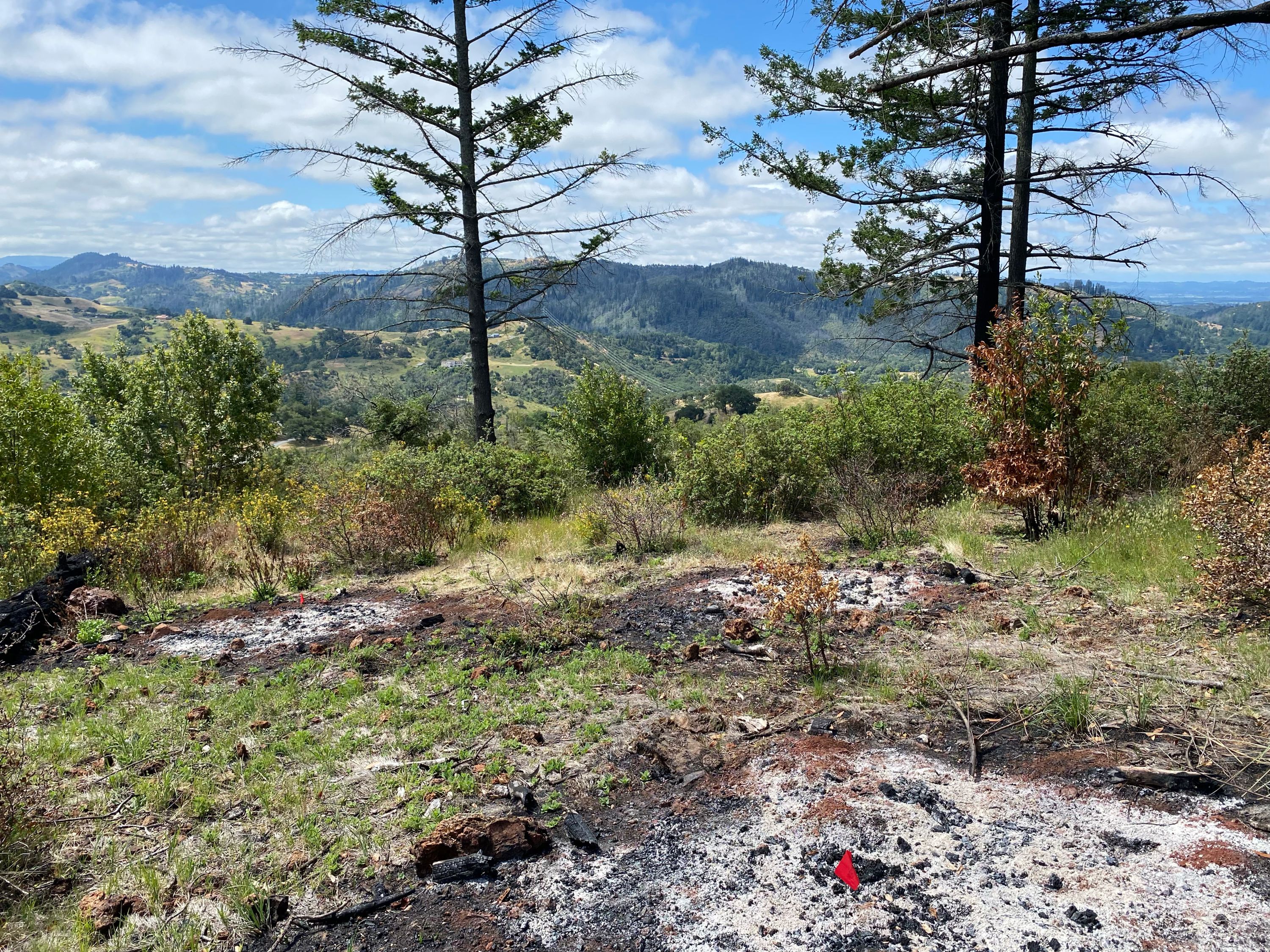Exploring a Fiery Method for Replacing Invasive Grasses

by Emma K. Tribble
Western IPM Center
In California and throughout the West, land managers face huge challenges on huge acreage.
“Land management is increasingly complicated by invasion, by climate change and by changing fire regimes,” said Justin Valliere, assistant professor of Cooperative Extension in invasive weed and restoration ecology at the University of California, Davis. “If we can find multi-pronged solutions that address multiples of these challenges, that could be the most effective way to confront some of these issues.”
And the threats combine – invasive annual grasses outcompete native perennial grasses and spread, serving as flashy fuels that exacerbate wildfires in a landscape already vulnerable to burning because of climate change.
To combat that combined threat, Valliere and doctoral student Olivia Parra are using a Western IPM Center grant to evaluate a combined solution – augmenting a fuel reduction method called pile burning with invasive grass management and native plant restoration.
Wildfires use underbrush and woody debris to climb into tree canopies, so it’s common practice for land managers in California to gather these understory materials and burn them.
But if these pile burns are positioned on top of patches of invasive annual grass, they can affect more than just the surface vegetation.
“This pile of branches burns so hot that it kills everything in the soil seedbank,” said Valliere. “If you do that in areas invaded by non-native plant species, you’re essentially nuking all those invasive seeds and creating a clean slate. You get this burn scar that’s like an empty island in a sea of invasive grasses.”
These islands are then planted with native, perennial bunchgrasses to restore the landscape and keep annual grasses from re-invading the area.
Valliere learned about this method from Michael Gillogly and Devyn Friedfel, land manager and assistant land manager at Pepperwood Preserve, a biological reserve in Sonoma County. Friedfel has been combining pile burns with native plant restoration at Pepperwood for five years.
Friedfel said there’s a visible difference between burn scars planted with native bunchgrass transplants and ones left alone, where non-native plants take over within a few years.
It’s like these little circles of native vegetation surrounded by patches of non-native, annual grasses,” he said. “You can walk through it and go, ‘There’s a little island, there’s a little island…’ Hopefully, with continued stewardship, these islands will spread.”
Valliere and Parra are partnering with the preserve to verify the effectiveness of using pile burns to remove invasives and restore native plants. They will also answer other research questions, including:
- Will the native bunchgrasses continue to thrive after invasive annual grasses move back into the burned areas?
- Will planting native annual wildflowers in addition to the perennial grasses keep the invasives out of burn scars longer?
- Can land managers do this restoration with native seeds, which take less time, money and labor than transplants?
- Will the native bunchgrasses planted in the burn scars survive prescribed fires?
“We’ve already seen anecdotally from Devyn and Michael’s work at Pepperwood that this works,” Valliere said, “Now we’re just trying to get data we can showcase to help convince folks that this is a great opportunity.”